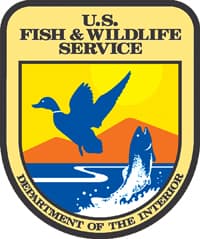Federal Agencies Propose Revised Rules to Improve Implementation of the Endangered Species Act
OutdoorHub 05.09.14

The U.S. Fish and Wildlife Service and the National Oceanic and Atmospheric Administration’s National Marine Fisheries Service (together, the Services) – the two federal agencies responsible for administering the Endangered Species Act (ESA) – today proposed two rules and a policy to improve the process of designating areas of “critical habitat” and consulting on the effects of federal actions on critical habitat. These proposals are designed to increase the predictability and transparency of the Services’actions related to critical habitat under the ESA.
Critical habitat represents the habitat essential for a species’ recovery.
The ESA requires, with few exceptions, that critical habitat be designated for species that are protected under the act. Critical habitat designations do not create reserves or protected areas, but federal agencies are required to consult with the Services to ensure that any actions they authorize, fund or carry out are not likely to result in the “destruction or adverse modification” of designated critical habitat.
The first proposed rule revises the definition of “adverse modification.”
The current regulatory definition has been invalidated by the courts, and the Services are now proposing to replace the invalidated definition with one that is consistent with the ESA, its legislative history and circuit court opinions.
The proposed revised definition of “adverse modification” focuses our review of federal actions on how they would affect the designated critical habitat’s ability to support recovery of the listed species. In this review, we will look at how the action may affect the quantity and quality of habitat features, the ability of that habitat to support the species throughout its life cycle, and the ability of the habitat to meet the species’ recovery needs; in other words, how the “conservation value” of the critical habitat is being affected.
The proposed definition reflects the approach the Services have employed since 2004, when the current definition was invalidated, and we do not expect it to be substantially more or less protective of critical habitat than the guidance used in recent years. Incorporating this approach into a revised regulation, however, will improve the predictability and transparency of these determinations for affected agencies and the public.
The second proposed rule clarifies the procedures and standards used for designating critical habitat, making minor changes to the regulations to:
better describe the scope and purpose of critical habitat, add and remove some definitions, and clarify the criteria for designating critical habitat. This proposed rule would also revise the Services’ regulations to be consistent with statutory amendments made in 2004 that make certain lands managed by the Department of Defense ineligible for designation as critical habitat. The Services believe these proposed changes will enhance the clarity and efficiency of the critical habitat designation process.
The third proposal is a policy to provide greater predictability, transparency and consistency regarding how the Services consider exclusions from critical habitat designations. Under the Act, the Services evaluate the economic, national security and other impacts of a designation and may exclude particular areas if the benefits of doing so are greater than the benefits of designation. This proposal describes the general policy position of the Services for considering different types of impacts (e.g., impacts to voluntary conservation agreements, impacts to national security, economic impacts) and is intended to provide greater predictability and transparency to the process of considering exclusions within a critical habitat designation.
“Our goal in proposing these revisions is to make the process of designating and consulting on critical habitat more predictable, more efficient, and more easily understood,” said Gary Frazer, U.S. Fish and Wildlife Service Assistant Director for Ecological Services. “We think these common-sense changes, reflecting lessons learned over the years, will improve conservation of species that need help and reduce the potential for conflicts and litigation.”
“These refined procedures and standards for designating critical habitat, and this new definition of ‘adverse modification’ will lead to greater clarity as we designate critical habitat and conduct section 7 consultations,” said Donna Wieting, National Marine Fisheries Service’s Director of Protected Resources.
These regulatory improvements proposed today are consistent with Executive Order 13563, issued by President Obama in 2011, which tasked federal agencies with making their regulations as clear as possible and reducing their burden on the American public. They were also included in the Department of Interior’s Final Plan for Retrospective Regulatory Review.
For comprehensive information on these proposed rules, including the notices submitted to the *Federal Register*, visit www.fws.gov/endangered/improving_esa/reg_reform.html.

